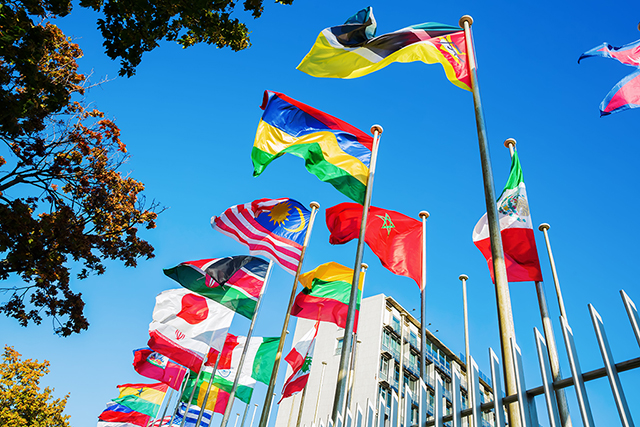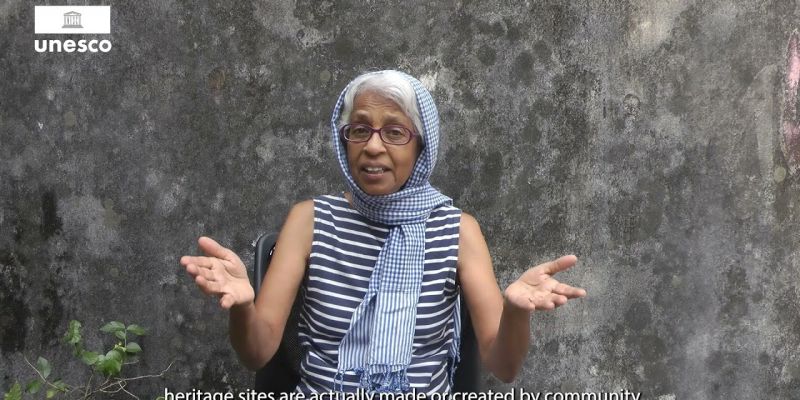Luang Prabang World Heritage model tested by COVID-19
On the third day of the Lao New Year Festival in mid-April, the Buddha image of Phra Bang, believed to be the guardian of Luang Prabang Town for generations, is taken in a traditional procession to a shrine at Xieng Thong Temple, where the devout ritually bathe the image and wish for the good health and happiness of their families. This year, of course, the procession has been called off, along with the nationwide water festival and the disruption of basic routines of everyday life such as the giving of alms to local monks.
Like towns and cities across the world, Luang Prabang World Heritage Town is under lockdown after the Lao government ordered strong public health measures following the first two confirmed COVID-19 cases in the country on 24 March. Shops and restaurants, tourist sites and cultural attractions have all been closed in a familiar routine in recent months.
For Luang Prabang and other World Heritage sites, however, the impacts are multifaceted as authorities and residents are safeguarding outstanding physical and intangible cultural values. At the same time, they depend heavily and sometimes exclusively on tourism for income. Although the revenue loss at Luang Prabang has not been released, other World Heritage sites in South-East Asia saw receipts decline by more than 99% in April. Residents at these sites are also struggling emotionally and mentally because of effects on the cultural and social fabric in the area.
“The most serious impacts are not only on our town economy, but also on the traditions of the people,” said Sengthong Lueyang, Deputy Director of the Luang Prabang World Heritage Office. “It is unfortunate that this spread of the virus is happening during the most important period of Luang Prabang town. It is the Lao New Year where we would express thanks to Phra Bang for looking after the town for its peace since the Lan Xang period.”
Luang Prabang was the capital of the Lan Xang Kingdom, one of the largest in South-East Asia from the 1350s to early 1700s CE. Now the heart of Lao PDR’s world-famous tourist attraction, also known for its French colonial-era architecture from the late 1800s, the site was inscribed on the World Heritage list in 1995 in recognition of its rich architectural and artistic heritage fusing the colonial and Lao traditional urban architecture.
Houses built of wood using traditional techniques and materials introduced during the colonial period, such as Huan Chan Heritage Luang Prabang, a century-old traditional Lao house located in Ban Xiengmouan, represent part of that heritage and previous way of life. Temples in Luang Prabang decorated with traditional techniques, patay phet and patay poon in the Lao language, demonstrate sophisticated stucco techniques drawing on local wisdom and resources. The townscape is distinguished by the sacred Mount Phou Si standing at its centre between the Mekong and Nam Khan rivers, with clay from the riverbeds used to make terracotta tiles according to tradition.
World Heritage sites are inscribed under the 1972 Convention, which recognizes that nature conservation and the preservation of cultural properties are inextricably linked. The UNESCO status confers a commitment on behalf of governments to manage and protect values at the site, while also stimulating tourism. The Town of Luang Prabang, one of three listed sites in Lao PDR, has welcomed about 500,000 tourists each year to a town of 50,000 residents, and prides itself as a model of heritage preservation in South-East Asia.
And like many other cultural sites worldwide, it is experiencing a novel test of that model as a result of the pandemic. “At this moment, 89% of all World Heritage properties are totally or partially closed. Museums and other cultural institutions are losing millions in revenue each day,” said Ernesto Ottone R., UNESCO Assistant Director-General for Culture. “Artists all around the world are unable to make ends meet. UNESCO is mobilizing the international community to increase access to culture and heritage online, to support the resilience of artists and to bring governments together to find policy solutions.”
Luang Prabang World Heritage Office authorities are working from home with staff rotating to the office to monitor 24 hours a day for onsite emergencies such as fires and breaches of the river banks. For cultural sites worldwide, human-induced risks such as vandalism and theft are also of concern.
These hazards are compounding challenges at the site that predate the current disruption. After Luang Prabang was listed as a World Heritage site, residents criticized how tourism and the new management regimen had caused harm, not to the built heritage, but to the local culture and community, driving people from their traditional livelihoods and even their homes in some cases. The recognition of the values and rich cultural traditions transmitted from generation to generation is now a major focus of an emerging movement in community-based conservation.
“It is important to have a strong benefit-sharing mechanism between the tourism sector and the local community and the rights of the visitors,” Dr. Mechtild Rossler, World Heritage Centre Director, stated recently. “UNESCO currently has been stressing on the preservation of the intangible cultural heritage rather than just bricks and stones.”
In 2015, the 20th anniversary of the World Heritage inscription, the government declared Luang Prabang as the centre of culture and tradition, and authorities started to integrate the protection of physical sites with prioritizing safeguarding intangible cultural heritage. There has been ongoing efforts between the government, the local authorities and the community members in documenting and making inventory of the living traditions that are disappearing.
UNESCO has been providing technical support on the safeguarding the intangible culture since 2011 by providing capacity training to authorities, academic institutions, civil society organizations and especially community members as core practitioners.
In developing countries such as Lao PDR, where many people struggle to meet basic needs, communities need support to also prioritize heritage sites and intangible culture. Many rural areas are relatively self-sufficient producing food and engaging in local trade. These communities, however, are inextricably linked to the country, region and outside world, requiring external support as well.
“Everything has come to a halt, including all our traditional ceremonies and family gatherings during our New Year,” said Dee Thisit, a local resident of Phan Luang village in Luang Prabang. “Economically, the lockdown gives us time to rethink how to survive. It makes us look internally how to be self-dependent.”
Communities caring for sites such as Luang Prabang are resilient – and have been for generations – even in challenging circumstances. They are protecting values of universal value and, just as conservation efforts have become increasingly community-based, support for the COVID-19 response at World Heritage sites must bring expertise and resources to bear with respect and understanding of the local context and cultures.
By Kamonrat Chayamarit, a programme officer with the Culture Unit at UNESCO Bangkok.
* This article was first published in Bangkok Post








